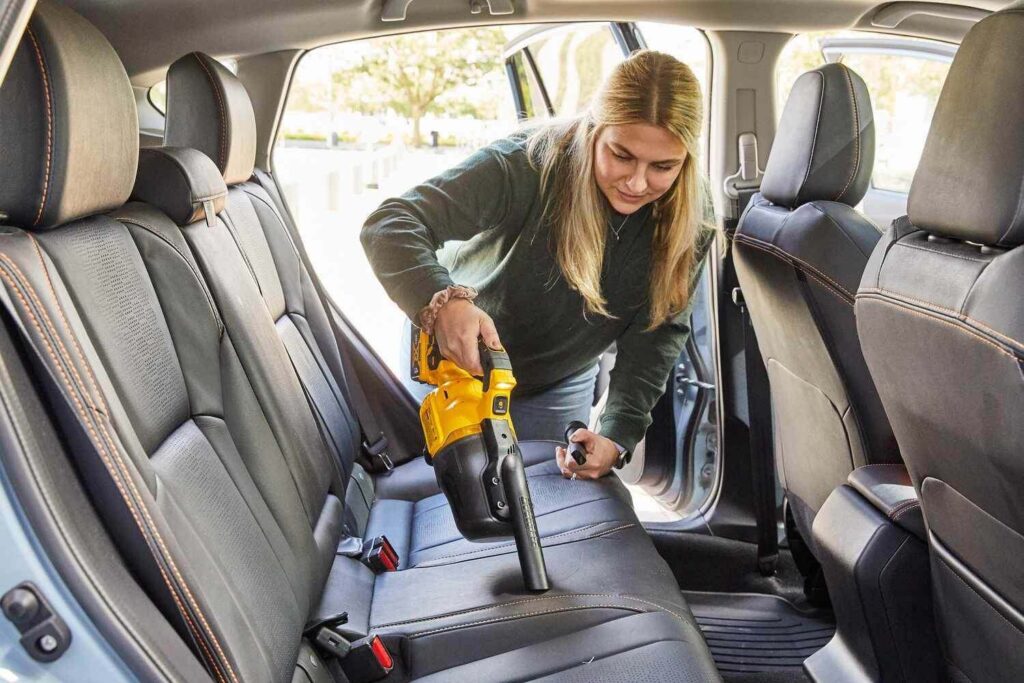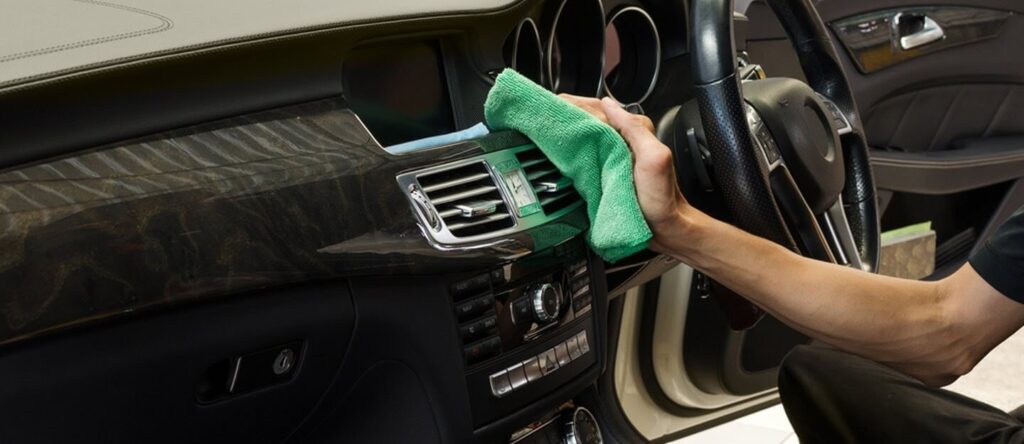Tired of pet hair and snack crumbs on your car? It’s time to give a little TLC to your car. It is not only considerate of your passengers, but also prolongs the life expectancy of your vehicle. Knowing how to maintain your car and protect your investment will be easier if you know how to clean its interior.
You and your passengers will be happy if you keep your car clean. Dirt, dust and grime buildup can degrade the interior materials of your car, causing more serious problems than just stains and smells.
You need to know the right products for your car’s interior to be as clean as the day you bought it. You can use many household products to clean your car. However, there are also cleaners that are designed to deep-clean your car while protecting the materials.
Car Interior Detailing
Some household cleaners contain harsh chemicals which can cause damage to surfaces of your car over time. Avoid or dilute these chemicals to protect your vehicle. They can damage leather, plastics and cloth. We recommend that you use products and cleaners designed to deep-clean your car while protecting the materials.
1. Remove and tidy the floor mats
Take out your floor mats once you’ve cleared out your car of all rubbish. It is a good idea to wash your floor mats with water and cleaner early in the cleaning process so that they have time to dry while you finish detailing the interior of your car. Shake your floor mats outside after removing them to get rid of big crumbs and other dirt. Utilize the vacuum to gather any embedded debris in your matting.
To soak and clean your mats before washing and hanging them to dry, fill a bucket with water and a little amount of the product. Verifying whether your floor mats can be machine washed is an additional choice. Instead of placing the mats on the ground if you don’t have a decent spot to hang them, spread out a tarp or drop cloth.
2. Interior Vacuum
After removing the floor mats, vacuum the whole interior of your vehicle. Utilize the attachments to reach tight spaces, such as the area between your dashboard and windshield and your cupholders. Remember to run the car vacuum cleaner over your chairs to get rid of all the little crumbs and dirt particles.

3. Dust off and sanitize the dashboard
Although the vacuum works wonders for collecting some dust and debris from your automobile, it could be too big to fit through the little spaces on your dashboard. To remove tiny particles from your dash and vents, use a duster or microfiber cloth. Dusters and microfiber cloths are made to collect dust rather than disperse it throughout your car, and they are sufficiently soft to avoid scratching your vents.
Use disinfectant wipes on your dashboard to eradicate any bacteria or germs that may have survived after the dust has been removed.Make it a habit to regularly clean your dash’s high-contact surfaces to prevent bacteria from growing there due to spills, crumbs, and normal use.
4. Properly Clean Console
Just like your dashboard, your console has to be cleaned of dust, debris, and other contaminants. When cleaning the infotainment panel, console controls, and shifter, use caution. For instance, your console’s radio and climate control buttons may be delicate, so use caution while dusting and cleaning them. Steer clear of ammonia-based cleaning chemicals while cleaning the infotainment screen in your car.
5. Clean steering wheel, door panels, and cup holders
Dust off and clean your cupholders, door panels, and steering wheel to keep them in good condition. Remove any detachable cup holders and give them a wash in warm water using dish soap. To get rid of any residue, give them a thorough clean with a sponge or soft-bristled brush. The door panels and steering wheel of your car are two high-touch areas that you may clean with disinfectant wipes. Nobody desires to use their automobile as a petri dish.
6. Clean the windows inside
Car Interior cleaning of your windows and windshields, use a glass cleaner with an alcohol base, such as Invisible Glass. Avoid using anything that isn’t designed to clean glass. Try to use two microfiber towels while washing the glass inside your automobile using glass cleaners. Apply the glass cleaner using a single cloth sprayed with the product. This prevents cleaner particles from adhering to other inside surfaces in your automobile, where they may accumulate and cause harm. To clean the glass, use the second towel. This method reduces streaks and protects your glass from scratches with a microfiber cloth.

7. Maintain Your Seats
To begin cleaning your seats, use the vacuum attachment with the hose to get rid of any crumbs or other dirt. Next, clean them using the appropriate materials for the material of your seats. Use a leather cleaner designed specifically for use on automobile upholstery. To maintain things supple, smooth, and shining, adhere to the product’s recommendations and think about executing a follow-up treatment with a leather conditioner. That scent of clean leather—who doesn’t adore it?
8. Remove odors
Lastly, use baking soda, activated charcoal, and air fresheners to eliminate that foul odor. For instance, you can put a few drops of your preferred essential oil into a plastic bottle with a lid and add baking soda or activated charcoal. Instead of using a gel air freshener, cut a few vents out of the lid and tuck it firmly beneath one of your seats. To keep your car smelling fresh, replace its contents every two months (or more often if it gets too stinky).
How Often Is It Appropriate to Clean Your Car’s Interior?
You may decide to clean certain areas of your automobile more often. To increase visibility on the road, clean the inside of your windows and windshields once a month or as needed. High-touch surfaces should be cleaned often, especially during the flu and cold seasons. Recall that you want your nose to work, not your automobile to operate. Lastly, to stop germs and insects from entering your car, always clean up food and drink spills as soon as they occur.
